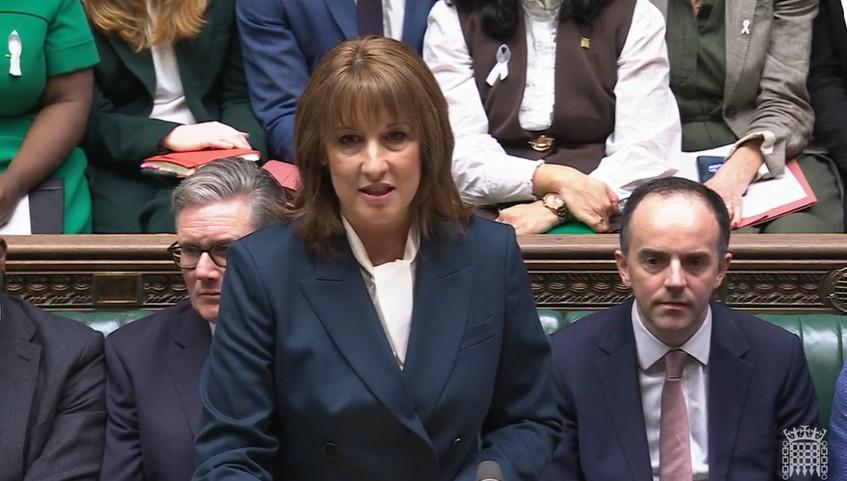26 November 2025
Autumn Budget 2025: Will it reduce diet and health inequalities?

Yesterday was the much anticipated Autumn budget, following a build up of analysis, speculation and leaks (literally up to the minute). So, what have we learned, and what does it mean for diet and health inequalities across the UK? Head of Policy and Advocacy Hannah Brinsden zooms in on three key policy announcements most relevant to our work.
The two child benefit cap removed!
Probably the most campaigned on policy, and the least secret of the announcements, was the removal of the two child benefit cap. The cap has been widely criticised as negatively impacting children, and the government has predicted that its removal will prevent 450,000 children living in poverty. It is considered to be the most cost-effective way of reducing poverty, which is good for the government when they have made commitments to reduce child poverty levels, and have a child poverty strategy on the way.
Our food insecurity survey has consistently shown that households with more than two children are more likely to be food insecure – in June this year, 21% of households with four children were food insecure, compared to 15% in households with two children. We also know food insecurity leads to lower purchases of healthy food such as fruit and veg, which will exacerbate poor health and inequalities that we see across the country. This is a positive step all round that should be celebrated.

Wages further increased
In addition, the announcement that the minimum wage will be increased is also welcome, off the back of rising cost of living pressures, and in particular rising food prices which have increased by 30% since 2022 according to our food price tracker. However, the new wages still fall short of what is needed to afford a healthy diet – currently, the lowest income households would need to spend 45% of their disposable income to achieve the government recommended healthy diet, this rises to 70% for households with children.
While this budget had a welcomed focus on children and families, other vulnerable groups also need to be supported and the government’s commitments need to go further in ensuring that wages and benefits are sufficient for everyone to afford a healthy diet, along with other essentials.
Our food insecurity survey found that one in 10 families in the UK were experiencing food insecurity in June this year, but that this rises to 34% amongst households on Universal Credit, 26% amongst those limited a lot by disability and 32% of single parent households with children. While a focus on children is to be applauded, it is essential that everyone is given the opportunity to thrive and access healthy food.
Soft drinks industry levy (SDIL) strengthened
Despite extensive lobbying efforts by industry, the government has done the right thing and strengthened SDIL – lowering the threshold at which companies pay the tax from 5g to 4.5g, aligning it to the Nutrient Profile Model cut offs, and removing the exemption on milk-based drinks. This is a welcome step, and acknowledgement of the major public health success SDIL has had to date – it has created a financial incentive for companies to remove tonnes of sugar from soft drinks, while also raising much needed revenue for children's health.
Overall, less than one in 10 children (9%) and less than 1 in 5 adults (19%) meet dietary sugar recommendations. The proposed changes to SDIL are estimated to cut 17 million calories a day from the nation’s daily intake, which will contribute to the government's ambitions of lowering obesity.
The government has set out a vision for a new ‘good food cycle’, which will require incentives across the food system that encourage healthier, more sustainable food for everyone. We know sugar comes from a range of food, not just soft drinks, so the government should take confidence in the success of SDIL to date and explore extending a levy to food, as part of efforts to grow a strong economy that supports public health, and reset the economic incentives in the food system. This will also help create new revenue that can be invested in addressing key priorities such as child poverty and children’s health.
What next?
The Government’s decision to remove the two-child limit and to strengthen the soft drink industry levy, alongside existing commitments on school food and Healthy Start, send a strong signal about the government’s intent to protect the health and wellbeing of our children.
In the short term, we are now looking towards the child poverty strategy for a clear roadmap for reducing child poverty over the next 10 years, with clear targets and indicators to measure success and ensure accountability. To reduce child poverty, and importantly keep it low, it will be critical that government continues to invest in the health of our youngest generation – from expanding Healthy Start to more children and ensuring school food is nutritious and standards monitored, through to investing in the early years and strengthening food and drink advertising and planning regulations.
In this Budget, the Government has taken some positive actions, but there is more to do to ensure everyone can access and afford healthy food, no matter what their background.
We’ll continue to make the case for bold action across the food system to reduce food insecurity and ensure that healthy and sustainable food is accessible and affordable for all, using a range of policy levers linked to school food, health, farming, planning and communities in line with our Roadmap for Reducing Food Insecurity.
- You can get more analysis of the Budget in our next podcast, available from 12pm on Friday (December 5) - listen here





